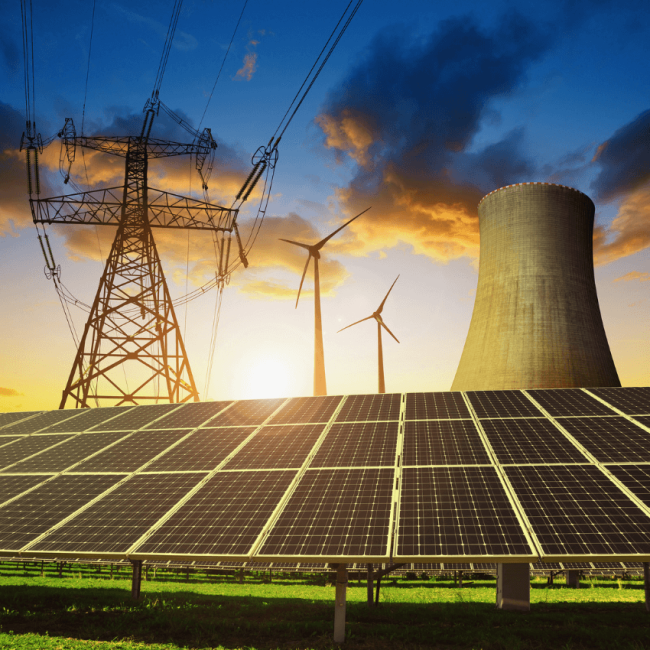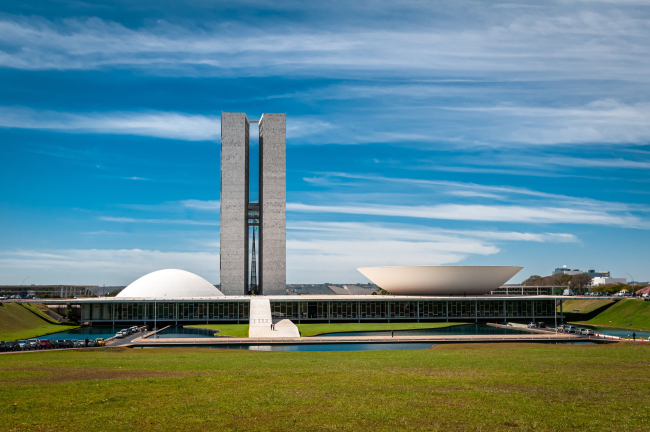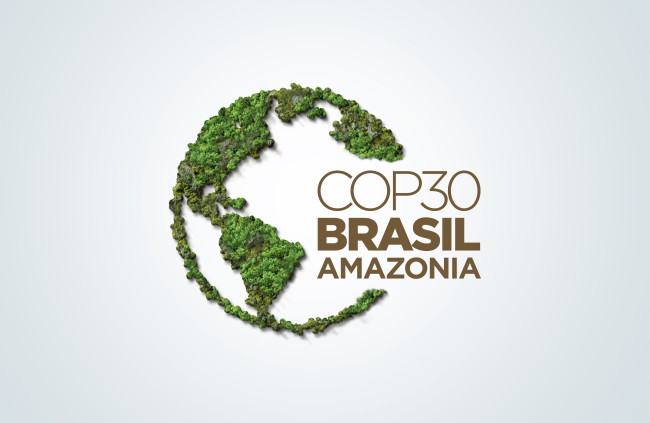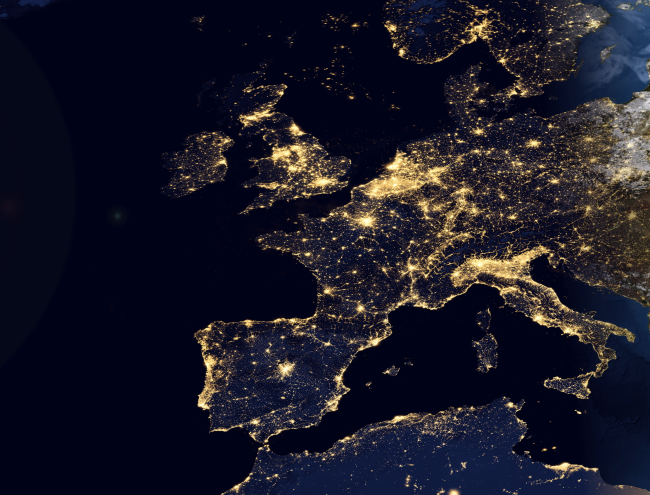The Gas Crisis and South-East Europe

Report written by Christi an Schülke, Junior Research Fellow, Ifri Bruxelles.
Déjeuner-débat en anglais autour de Olivier Silla, coordonnateur des politiques, Unité "Electricté et Gaz, DG de l'Energie et des Transports, Commission européenne. Ce débat s'inscrit dans les "Mardis de l'Ifri à Bruxelles". Pour accéder à la présentation Power Point, cliquez ici
In the gas crisis of January 2009, South-East Europe (SEE) was probably the region most impacted. It is therefore interesting to analyze how the region"s energy sector and policy-makers reacted and which lessons can be drawn from these days.
First, one must point to a certain paradox: SEE has a relatively low utilization of gas, but most countries in the region are highly dependent on one single supplier, Gazprom. Overall gas consumption in SEE is very limited in absolute terms and gas use is limited to industry and district heating in most cases. Romania and Croatia are the only countries in the region that have a significant number of households connected to the gas grid. With the exception of Greece, and for a small part Croatia, gas is not used for electricity production in SEE. This lessened the impact of the supply disruption for the region - the situation would have been much worse if SEE countries relied on gas for electricity production.
Furthermore, one must bear in mind that the two countries with the highest gas consumption in the region, Romania and Croatia, are also the two only ones who cover most of their gas needs from domestic production. All the other SEE countries depend to a large extent (100% for some of them) from imports coming from Russia via Ukraine. Gas reaches the region via three main pipeline branches that all go through Ukraine. These three branches - via Moldova/Romania/Bulgaria, Hungary/Serbia, Slovakia/Austria/Slovenia/Croatia - are not interlinked. There is hence no possibility to bring gas from one branch to another. What is more, the region"s dominant supplier Gazprom is also active in downstream markets having shares in many companies and investing in several projects (i.e. new pipelines and storage sites).
For the overall coordination and cooperation in the energy sector, the Energy Community plays an important role in SEE. Set up in 2006, it provides a flexible framework and helps reforming the region"s energy sector. In the context of the Energy Community, SEE countries are obliged to introduce the EU acquis on energy. Moreover, the Energy Community also foresees ambitious goals for regional solidarity.
Concerning the impact of the January 2009 crisis, Mr. Silla underlined that Bulgaria was the most affected country, also because the transit infrastructure reaching Bulgaria (the Ukraine-Moldova-Romania-Bulgaria pipeline branch) is not interconnected with the domestic Romanian grid. Therefore, it was technically impossible for gas produced or stored in Romania to reach Bulgaria. Limited gas storage capacity in Bulgaria itself could only cover one third of normal Bulgarian consumption needs when Russian supply was disrupted. Therefore, most of Bulgaria"s gas-consuming industries had to shut down in January. District heating systems could be switched to oil fuel, but this took time (two days in general - there was no district heating while these two days).
In Macedonia, gas supply was also completely halted while the crisis. Therefore, some industries that rely on gas had to stop production. Households were less concerned, as gas is used in only a few district heating systems that could be switched to oil fuel.
In Greece, the supply disruption was well covered by increased LNG imports via the Greek LNG terminal at Revithoussa. However, this terminal cannot be regarded as a solution for the region, as it covers Greek gas needs but has no spare capacity left at a time when it is the only entry point for Greece (as it was the case in early January). Technically, it was not difficult to reverse gas flows inside Greece. But for capacity and probably commercial reasons, the emergency delivery of Greek LNG gas to Bulgaria only came about in the very last days of the crisis.
Serbia depends to a large extent on Gazprom for gas deliveries: the Russian supplier is the only external supply source and domestic production covers less than 10% of Serbian consumption. The construction of the first Serbian gas storage site has been completed recently, but it was not yet working at full capacity while the crisis. Serbia managed to switch quite quickly to oil fuel for district heating. Moreover, deliveries of gas stored in Hungary could be secured, based on short-term contracts with MOL and E.ON. These deliveries covered around 50% of Serbian consumption. This allowed for ensuring household's consumption, heating and basic needs of industry. But industries that could be stopped without great damage indeed stopped production. Two interesting conclusions concerning Serbia can be made: the country received for the first time gas from another supplier than Gazprom. And it will certainly speed up existing plans for extending its gas storage capacity.
In Bosnia and Herzegovina, district heating was interrupted for some days in early January. A few heavy industries had to shut down, too. It took some time to switch to fuel oil, or ensure deliveries from Hungaria via Serbia. But as the latter solution was effectively put in place, it was seen as a positive political sign for bilateral relations.
The situation in Croatia was quite different, as Croatia produces roughly 80% of its consumption. Industry had to decrease its consumption in some cases, but households were not concerned. Moreover, Croatia has storage capacity that could be used. Parts of Croatian gas production are located offshore in the Adriatic Sea. These platforms are linked to Croatia and Italy; they usually serve both countries. While the crisis, these gas flows were partly redirected, with more gas flowing to Croatia than in usual times. Additionally, Croatia also received gas from Western European companies (e.g. GDF), via reversed gas flows especially in Northern Italy: it is interesting to note that these deliveries happened, because there had been discussion about their technical feasibility in the past.
In sum, the consequences of the supply disruption were not as dramatic as they could have been. The possibility to switch district heating to fuel oil allowed restarting these systems after one or two days in general. In the current situation of a severe global economic crisis and falling demand, stopping production was not as painful as it had been at other moments for most of the industries concerned. In some cases, it might have been even beneficial to stop production - also in view of the falling oil price that will result in lower gas prices in the next months. Therefore, it is difficult to put exact figures on the economic impact of the crisis.
Moreover, the energy industry was quite efficient in responding to the crisis: companies were able to contract additional volumes and arrange unusual transport in 24-48 hours. Capacities involved were low for Western European standards, but vital for SEE consumption needs.
However, the crisis clearly underlined the weaknesses of SEE energy infrastructure. As no East-West gas pipelines exist, the three export branches are not linked. Gas supply disruptions resulted in higher electricity consumption, especially in the days when the fuel switch from gas to oil had not yet happened. It came as a “good surprise” that electric production and transmission systems did manage to work at maximum capacity: electricity production and consumption reached record levels in Serbia and Bosnia in January. If there had been problems on the electricity grid due to overload, the situation would have been much worse.
On a more political level, it was important that Western Balkans countries were well involved in EU-wide emergency coordination mechanisms. Western Balkan countries participated fully at Gas Coordination Group meetings, and cooperated well (e.g. by disclosing the necessary information).
As a consequence of the gas crisis, the debates on short and long term measures to improve security of supply in SEE have been intensified. The implementation of many projects that have been in the planning phase already before the crisis should now be accelerated. In the short term, missing links and reverse flow possibilities should be realized: these projects need only limited investments, but would bring significant benefits in terms of security of supply. Therefore, many of these projects are being considered in the discussions on the EU recovery plan. Moreover, the capacities of existing storage sites will be enhanced. Finally, the connection to alternative supply routes is now considered in a new light.
Concerning specific projects, Mr. Silla mentioned the following (geographically from west to east):
- The Croatia-Hungary interconnector is a very advanced project that could come online soon. It would significantly improve security of supply, especially if the Adria LNG terminal is built.
- There are plans to enhance storage capacities in Croatia.
- The plans for a Hungary-Romania interconnector exist for a long time. It will now soon be realized and link storage capacities in both countries.
- The political situation in Bosnia and Herzegovina complicates of course the development of energy projects. The current uncertainties will delay investments for important projects like the interconnector with Hungary and Croatia.
- A relatively limited investment will allow for a capacity increase of the Serbian gas storage at Banatski Dvor.
- Inside Romania, the domestic Romanian system will be interlinked with the transit pipeline system. Thanks to this, the Romanian production and storage will get regional importance.
- The gas interconnectors Bulgaria-Romania and Hungary-Romania need only limited investments, but has a huge potential in terms of security of supply.
- Bulgaria also intends to increase storage capacity, and to enhance the existing interconnector with Greece.
- The Bulgaria-Serbia interconnector remains rather uncertain (direction of flow and relation with the Southstream project are not yet clear).
These short term measures are most important and all quite easy to realize, as they only need limited investments. They should be realized quickly - it would be wrong to wait for the larger, but less certain, pipeline projects to happen. These long term projects would open new supply routes to SEE, even if their main purpose is to deliver gas to Western European markets (SEE will hence play a more important role for gas transit in the future). These projects include:
- A LNG terminal in Croatia (“Adria LNG”): this project exists for a long time, but it could now see its realization speeded up, especially concerning the project"s approval by Croatian authorities. It would represent an entirely new entry point to the region, and significantly improve the situation in terms of security of supply.
- The Nabucco pipeline, linking gas reserves in Central Asia and the Middle East to the EU via Turkey, passing through Bulgaria, Romania, Hungary to reach Austria.
- The South Stream pipeline, linking Russia to Bulgaria via an offshore pipeline in the Black Sea. It would then have branches to Italy via Greece, and Austria/Hungary via Serbia.
- The Turkey-Greece-Italy Interconnector, which would bring Azeri gas to Italy.
- The Transadriatic Pipeline, which would bring Azeri and Iranian gas to Italy via Turkey, Greece and Albania.
If these projects are going to be realized, it will be important that all SEE countries can benefit from these new sources of gas supply. Therefore, the project of a “gas ring”, interlinking all the Western Balkan countries, should be realized. This project has been proposed by a recent study on regional gasification in SEE (by the World Bank and KfW). The study explains that there is a potential for developing a regional gas market, but only if it will be truly regional (as gas markets of every single country are too small to make investments profitable) and linked to gas based electricity production. If these two conditions are not fulfilled, the needed investments cannot be justified.
In his concluding remarks, Olivier Silla presented perspectives for the energy future in SEE. An increased use of gas in SEE (mainly for electricity generation, household consumption and heating) would be very positive for the environment, in particular concerning CO2 emissions. Gas could reduce the use of lignite for electricity production: such a shift of fuel would significantly decrease CO2 emissions. This move should then be accompanied by efforts to improve energy efficiency. Moreover, bringing gas to SEE cities would improve the population"s standard of living. However, the vulnerability to potential gas supply disruptions has to be addressed. The best option in this context is greater regional integration, both in terms of infrastructures and of market functioning. In the short term, policy makers should focus on key investments in interconnections and storage upgrade. These overall limited investments would improve security of supply and market capacity. In the long term, it is rather open to debate which of the currently planned “big projects” will see the light.
In his comments, William C. Ramsay, director of Ifri"s Energy Program, underlined the fact that the gas crisis of January 2009 had deeper impacts than the 2006 crisis. Therefore, we are now analyzing the situation more thoroughly than three years ago. One might hope that the lessons learnt will now be implemented. Some particular questions remain, e.g. concerning the opportunities for fuel switching. Another issue is the flexibility of gas transport: we should now try to analyze how the emergency measures and short term contracts worked, and what physical gas flows occurred. In this context, enhanced transparency could be a solution. One might think about obligations to publish contracts and traded volumes. The role of Gazprom subsidiaries in SEE countries while the crisis should also be analyzed, having in mind that Gazprom is an important investor in the region. Finally, one might wonder about the role of the Energy Community in the crisis. In this context, it would be interesting to know if EU countries have any solidarity obligation towards the Western Balkans in the field of energy.
In the following question and answer session, the discussion touched upon possible long-term consequences of the crisis: how realistic is a move of SEE countries to increase the use of gas after the crisis? As a matter of fact, all current investment plans for new power plants in SEE are based on coal or hydropower. Other questions addressed the issue of electricity and the danger of a blackout while the crisis. In this context, the need for more electricity interconnectors was stressed. Lack of capacity limits electricity exchanges in the region; it is therefore good news that several electricity interconnectors are currently being built in SEE. Asked on progress concerning solidarity between members of the Energy Community, Mr Silla underlined positive points in current developments, like the emergency gas deliveries to Bosnia and Herzegovina via Serbia and plans to commonly use gas storage among several countries. Moreover, the increased contacts between professionals at Energy Community meetings and working groups have already helped to create better mutual understanding.

Available in:
Regions and themes
Share
Download the full analysis
This page contains only a summary of our work. If you would like to have access to all the information from our research on the subject, you can download the full version in PDF format.
The Gas Crisis and South-East Europe
Related centers and programs
Discover our other research centers and programsFind out more
Discover all our analysesBrazil One Year Away from the October 2026 General Elections
Brazil’s general elections will be held on October 4, 2026, to elect the president, vice-president, members of the National Congress, governors, deputy governors and state legislative assemblies. For the presidential and gubernatorial elections, a second round will be held on October 25 if no candidate obtains a majority of the votes in the first round.
COP30: An Inflection Point for Climate Action and Governance
The 30th Conference of the Parties (COP30), opening in Belém, Brazil, on November 10th 2025, convenes at a perilous moment.
The Strategic Dimension of Skills in the Clean Industrial Deal
In the competitiveness and energy transition battles, the European Union (EU) must master a determinant factor: skills.
The Energy Transition Faces Geopolitical Challenges. How Can Ideological Divides Be Overcome?
President Trump’s positions and policies, combined with record coal consumption and booming global electricity demand, geo-economic confrontation, and widespread concerns about energy security, are changing the game when it comes to understanding realistic decarbonization trajectories. The war in Europe is intensifying competition between defense and transition budgets. This is also the case elsewhere in the world.









